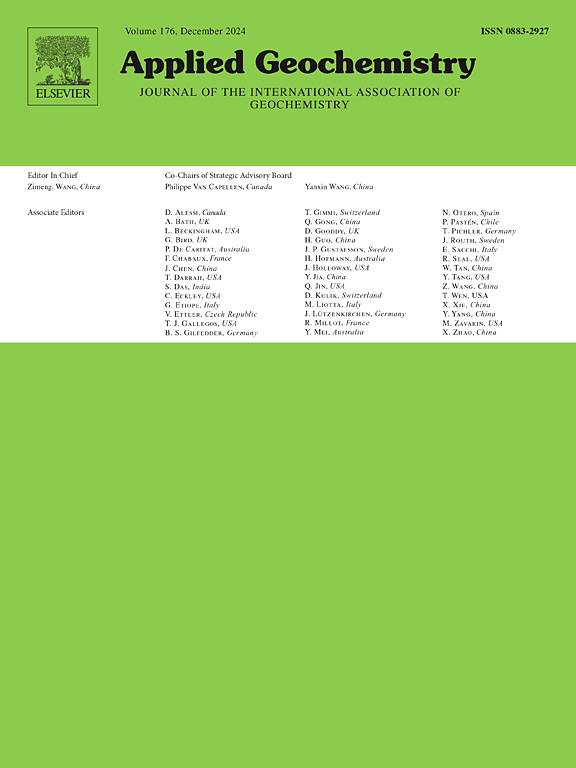东京湾污水处理厂污水形成的沿海海水溶解有机物的化学多样性
IF 3.1
3区 地球科学
Q1 GEOCHEMISTRY & GEOPHYSICS
引用次数: 0
摘要
污水处理厂出水会影响水体系统中溶解有机物(DOM)的化学多样性。本研究采用傅里叶变换离子回旋共振质谱法(FT-ICR MS)研究了污水处理厂对日本东京湾沿岸海水DOM化学多样性的影响。在沿海海水样品中,在人为扰动较小的背景组中鉴定出的化合物平均数量为63.9%。与背景样品相比,在一些污水处理厂大量排放的沿海海水中,多氯甲烷化合物是DOM的主要成分。此外,在沿海海水样本中发现了人工甜味剂三氯蔗糖。沿海海水中CHOS分子强度百分比随接收污水处理量的增加呈线性增加(R2 = 0.786, P <;0.05)。这些发现表明东京湾沿岸海水中的DOM分子组成受到上游污水处理厂污水的高度影响,并突出了FT-ICR质谱在追踪环境中人为来源的分子特征方面的巨大潜力。本文章由计算机程序翻译,如有差异,请以英文原文为准。

Chemodiversity of coastal seawater dissolved organic matter shaped by wastewater treatment plant effluent in Tokyo Bay, Japan
The wastewater treatment plants (WWTPs) effluent can affect the chemodiversity of dissolved organic matter (DOM) in the aquatic systems. In this study, Fourier transform ion cyclotron resonance mass spectrometry (FT-ICR MS) was employed to reveal the effluence of WWTPs on the chemodiversity of coastal seawater DOM in Tokyo Bay, Japan. The average number of compounds identified in the background group with minor anthropogenic perturbation was 63.9% for the coastal seawater samples. Compared with the background samples, CHOS compounds were the predominant fraction of DOM in some coastal seawater receiving vast effluent from WWTPs. Additionally, the artificial sweetener sucralose was identified in coastal seawater samples. The intensity percentages of CHOS molecules in the coastal seawater linearly increased with the number of received WWTPs (R2 = 0.786, P < 0.05). These findings suggested that DOM molecular composition in Tokyo Bay coastal seawater had been highly influenced by upstream WWTPs effluents and highlighted the great potential of FT-ICR MS in tracing anthropogenically derived molecular signatures in the environments.
求助全文
通过发布文献求助,成功后即可免费获取论文全文。
去求助
来源期刊

Applied Geochemistry
地学-地球化学与地球物理
CiteScore
6.10
自引率
8.80%
发文量
272
审稿时长
65 days
期刊介绍:
Applied Geochemistry is an international journal devoted to publication of original research papers, rapid research communications and selected review papers in geochemistry and urban geochemistry which have some practical application to an aspect of human endeavour, such as the preservation of the environment, health, waste disposal and the search for resources. Papers on applications of inorganic, organic and isotope geochemistry and geochemical processes are therefore welcome provided they meet the main criterion. Spatial and temporal monitoring case studies are only of interest to our international readership if they present new ideas of broad application.
Topics covered include: (1) Environmental geochemistry (including natural and anthropogenic aspects, and protection and remediation strategies); (2) Hydrogeochemistry (surface and groundwater); (3) Medical (urban) geochemistry; (4) The search for energy resources (in particular unconventional oil and gas or emerging metal resources); (5) Energy exploitation (in particular geothermal energy and CCS); (6) Upgrading of energy and mineral resources where there is a direct geochemical application; and (7) Waste disposal, including nuclear waste disposal.
 求助内容:
求助内容: 应助结果提醒方式:
应助结果提醒方式:


